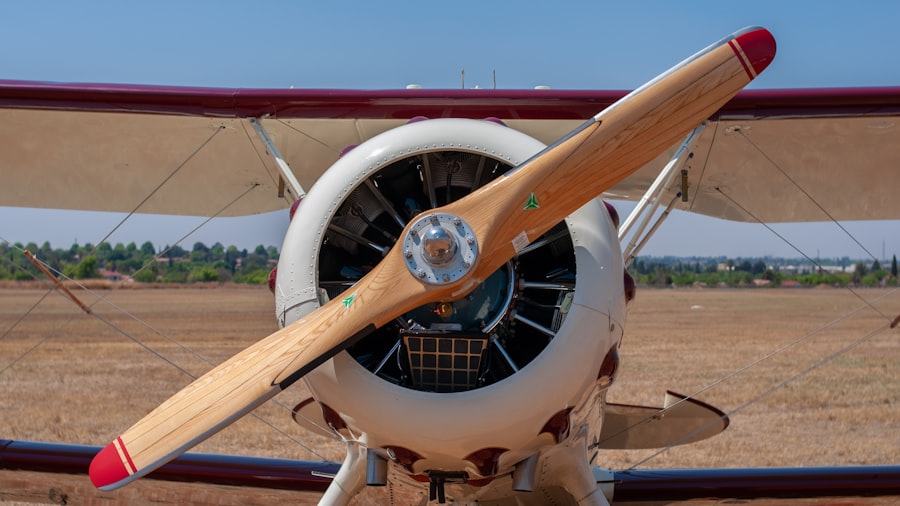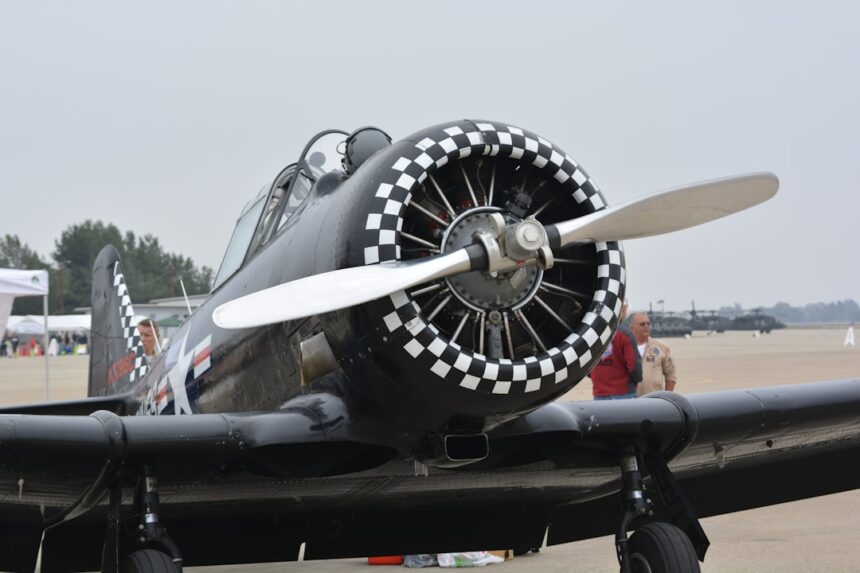Skewed propeller blade technology represents a significant advancement in the field of fluid dynamics and propulsion systems. This innovative design features blades that are twisted or angled in a manner that deviates from traditional straight or uniformly pitched blades. The skewing of the blades allows for enhanced performance characteristics, particularly in terms of efficiency and noise reduction.
As industries increasingly seek to optimize their operations and reduce environmental impacts, skewed propeller blades have emerged as a compelling solution. The concept of skewed propeller blades is rooted in the desire to improve the interaction between the blades and the fluid they operate within, whether it be air or water. By altering the geometry of the blades, engineers can manipulate the flow patterns around them, leading to reduced drag and improved thrust.
This technology has found applications across various sectors, including aviation, marine engineering, and renewable energy, showcasing its versatility and potential for widespread adoption.
Key Takeaways
- Skewed propeller blade technology is a design innovation that improves the efficiency and performance of propellers.
- Historical development of skewed propeller blades dates back to the early 20th century, with continuous advancements in design and engineering.
- Benefits of skewed propeller blades include reduced vibration, noise, and cavitation, as well as improved fuel efficiency and maneuverability.
- Improved efficiency and performance with skewed propeller blades result in reduced fuel consumption and emissions, making them environmentally friendly.
- Challenges and limitations of skewed propeller blades include complex design and manufacturing processes, as well as potential performance variations in different operating conditions.
Historical Development of Skewed Propeller Blades
The journey of skewed propeller blade technology can be traced back to the early 20th century when engineers began experimenting with different blade designs to enhance propulsion efficiency.
Pioneering research in aerodynamics and hydrodynamics laid the groundwork for understanding how blade orientation could influence performance.
As computational fluid dynamics (CFD) tools became more sophisticated in the late 20th century, researchers were able to simulate and analyze the effects of skewed blade designs with greater accuracy. This technological leap allowed for more extensive experimentation and validation of the benefits associated with skewed propeller blades. By the early 21st century, several industries had begun to adopt this technology, recognizing its potential to enhance efficiency and reduce operational costs.
Benefits of Skewed Propeller Blades

One of the primary benefits of skewed propeller blades is their ability to reduce vortex formation, which is a common issue in traditional blade designs. Vortices can lead to increased drag and noise, negatively impacting overall performance. By skewing the blades, engineers can disrupt the formation of these vortices, resulting in smoother airflow or water flow around the blades.
This reduction in turbulence not only enhances efficiency but also contributes to quieter operation, a crucial factor in applications such as aviation and marine transport. Additionally, skewed propeller blades offer improved thrust generation across a range of operating conditions. The unique geometry allows for better load distribution along the blade surface, which can lead to increased lift and thrust at lower speeds.
This characteristic is particularly advantageous for applications requiring high maneuverability or those operating in variable conditions, such as small boats or drones. The adaptability of skewed blades makes them an attractive option for engineers looking to optimize performance in diverse environments.
Improved Efficiency and Performance with Skewed Propeller Blades
| Metrics | Before | After |
|---|---|---|
| Fuel Consumption | 10 gallons/hour | 8 gallons/hour |
| Speed | 50 mph | 55 mph |
| Noise Level | 80 dB | 75 dB |
The efficiency gains associated with skewed propeller blades are significant, often translating into lower fuel consumption and reduced operational costs. In aviation, for instance, aircraft equipped with skewed propellers can achieve higher speeds with less power, allowing for longer flight ranges without increasing fuel expenditure. This efficiency is not only beneficial for airlines seeking to minimize costs but also contributes to reduced carbon emissions, aligning with global sustainability goals.
In marine applications, skewed propeller blades have been shown to enhance vessel performance by improving thrust-to-weight ratios. This improvement enables ships to navigate more effectively through challenging waters while maintaining fuel efficiency. The ability to operate at optimal speeds without excessive energy consumption is a game-changer for the shipping industry, where fuel costs represent a significant portion of operational expenses.
As such, skewed propeller technology is increasingly being recognized as a vital component in the quest for greener maritime solutions.
Design and Engineering of Skewed Propeller Blades
The design process for skewed propeller blades involves a complex interplay of aerodynamics, hydrodynamics, and material science. Engineers must consider various factors such as blade shape, angle of skew, and overall dimensions to achieve the desired performance characteristics. Advanced modeling techniques are employed to simulate fluid interactions with different blade designs, allowing for iterative testing and refinement before physical prototypes are created.
Moreover, the engineering of skewed propeller blades requires a deep understanding of the specific application they will serve. For instance, blades designed for high-speed aircraft will differ significantly from those intended for low-speed marine vessels. This tailored approach ensures that each design maximizes efficiency and performance within its operational context.
As technology continues to evolve, engineers are increasingly leveraging artificial intelligence and machine learning algorithms to optimize blade designs further, pushing the boundaries of what is possible in propeller technology.
Materials and Manufacturing Processes for Skewed Propeller Blades

The choice of materials used in the construction of skewed propeller blades plays a crucial role in their performance and durability. Traditional materials such as aluminum and steel have been widely used; however, advancements in composite materials have opened new avenues for innovation. Composites offer a favorable strength-to-weight ratio, allowing for lighter blades that do not compromise on strength or rigidity.
Manufacturing processes for skewed propeller blades have also evolved significantly over recent years. Techniques such as additive manufacturing (3D printing) are being explored for producing complex geometries that would be challenging to achieve through conventional methods. This flexibility in manufacturing not only reduces production times but also allows for greater customization of blade designs to meet specific performance requirements.
As industries continue to embrace these advanced materials and manufacturing techniques, the potential for further enhancements in skewed propeller technology becomes increasingly apparent.
Testing and Validation of Skewed Propeller Blade Technology
Testing and validation are critical components in the development of skewed propeller blade technology. Engineers employ a variety of methods to assess performance metrics such as thrust generation, efficiency, and noise levels. Wind tunnels and water tanks are commonly used facilities where prototypes can be subjected to controlled conditions that mimic real-world operating environments.
In addition to physical testing, computational simulations play an essential role in validating design choices before moving to production. By utilizing CFD tools, engineers can predict how changes in blade geometry will affect performance outcomes without the need for extensive physical prototypes. This combination of empirical testing and simulation allows for a comprehensive understanding of how skewed propeller blades will perform under various conditions, ensuring that only the most effective designs make it to market.
Application of Skewed Propeller Blades in Different Industries
Skewed propeller blades have found applications across a wide range of industries due to their versatile performance characteristics. In aviation, they are increasingly being integrated into aircraft designs aimed at improving fuel efficiency and reducing noise pollution during takeoff and landing phases. The aviation sector’s push towards sustainability has made skewed propellers an attractive option for manufacturers looking to meet regulatory standards while enhancing passenger comfort.
In marine engineering, skewed propeller blades are being utilized in both commercial shipping vessels and recreational boats. Their ability to improve maneuverability and fuel efficiency makes them ideal for various marine applications, from cargo ships navigating busy ports to small yachts cruising along coastlines. Furthermore, renewable energy sectors are exploring their use in wind turbines and hydrokinetic systems, where optimized blade designs can significantly enhance energy capture from natural resources.
Challenges and Limitations of Skewed Propeller Blades
Despite their numerous advantages, skewed propeller blades are not without challenges and limitations. One significant hurdle is the complexity involved in their design and manufacturing processes. The intricate geometries required for optimal performance can lead to increased production costs and longer lead times compared to traditional blade designs.
This complexity may deter some manufacturers from adopting this technology, particularly in cost-sensitive industries. Additionally, while skewed propeller blades offer improved performance under certain conditions, they may not be universally applicable across all scenarios. For instance, specific operating environments may favor traditional blade designs due to their simplicity or established performance metrics.
Engineers must carefully evaluate the trade-offs associated with adopting skewed designs versus conventional options based on the unique requirements of each application.
Future Trends and Innovations in Skewed Propeller Blade Technology
Looking ahead, several trends are poised to shape the future of skewed propeller blade technology. One notable direction is the continued integration of smart technologies into blade designs. Sensors embedded within blades could provide real-time data on performance metrics such as thrust generation and efficiency levels, enabling dynamic adjustments during operation for optimal performance.
Moreover, ongoing research into biomimicry—designing based on nature’s solutions—may yield new insights into optimizing skewed blade geometries further. By studying how natural organisms like fish or birds achieve efficient movement through fluid mediums, engineers can develop innovative designs that push the boundaries of current technology. As industries increasingly prioritize sustainability and efficiency, these advancements will likely drive further adoption of skewed propeller blade technology across various sectors.
Conclusion and Outlook for Skewed Propeller Blade Technology
In conclusion, skewed propeller blade technology represents a significant leap forward in propulsion systems across multiple industries. With its ability to enhance efficiency, reduce noise pollution, and improve overall performance metrics, this innovative design is well-positioned to meet the demands of an evolving market focused on sustainability and cost-effectiveness.
The future outlook for skewed propeller blades is promising as engineers explore new materials, manufacturing processes, and design methodologies that leverage cutting-edge technologies like artificial intelligence and biomimicry. While challenges remain regarding complexity and applicability across all scenarios, the potential benefits far outweigh these limitations. As industries embrace this transformative technology, skewed propeller blades are set to play an increasingly vital role in shaping efficient propulsion systems for years to come.
The development of skewed propeller blades has been a significant advancement in marine engineering, offering improved efficiency and reduced noise levels. A related article that delves into the intricacies of this technology can be found on the In The War Room website. This article provides insights into the design considerations and performance benefits of skewed propeller blades, making it a valuable resource for those interested in maritime innovations. For more detailed information, you can read the full article by visiting this link.
WATCH THIS! America’s Nuclear Navy Was Born From Espionage
FAQs
What are skewed propeller blades?
Skewed propeller blades are designed with a twist or angle along the length of the blade, which helps to reduce vibration and noise while improving overall performance.
How do skewed propeller blades differ from traditional propeller blades?
Skewed propeller blades have a twisted design that allows for a more efficient and smoother operation compared to traditional straight blades. This design also helps to reduce cavitation and improve maneuverability.
What are the benefits of using skewed propeller blades?
The benefits of using skewed propeller blades include reduced vibration and noise, improved fuel efficiency, better maneuverability, and reduced cavitation. These blades also offer better performance in various operating conditions.
How are skewed propeller blades developed?
Skewed propeller blades are developed using advanced design and engineering techniques, including computational fluid dynamics (CFD) simulations and physical testing. The design process involves optimizing the blade shape and twist to achieve the desired performance characteristics.
What industries or applications can benefit from skewed propeller blades?
Skewed propeller blades are commonly used in marine propulsion systems, including ships, boats, and other watercraft. They are also utilized in various industrial applications where efficient and quiet propulsion is required.




